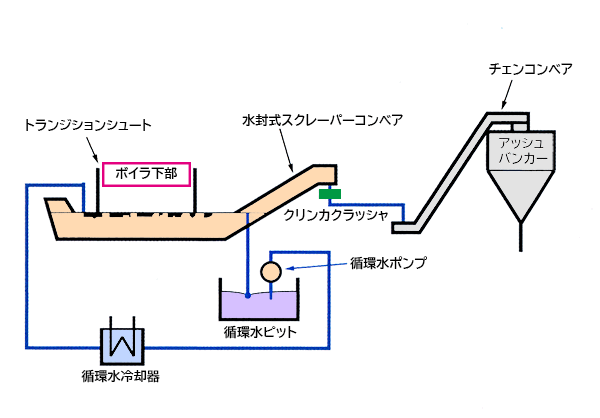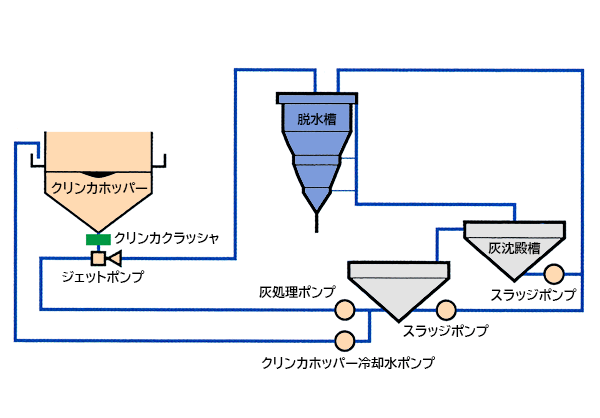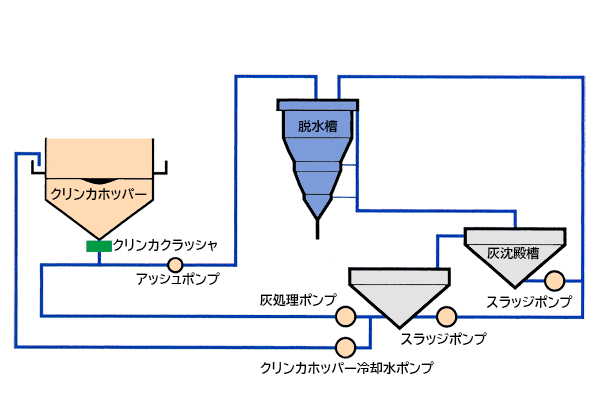BOTTOM ASH HANDLING SYSTEM
A submerged scraper conveyor system is used at Europe mainly.
There are little make-up water amount and power consumption, and this system is low in cost and is an economical way.
But there is a problem in the reliability and the maintenance because it’s mechanical.
A system suitable to lower the cost.
A Hydraulic Conveying System with a jet pump is popular by Japan and U.S..
This is because practical use including maintenance is easy and highly reliable compared with the submerged scraper conveyor system.
But, when using a jet pump, there is a lot of quantity of water and the power to use a high pressure water pump is big also a noise is about 110 dB of violence, so it isn’t desirable as the operational environment.
So we paid attention to an ash pump system for the purpose of canceling the fault of both systems and utilizing the merit.
And we advanced research and development and succeeded in commercializing.
This system is working at a lot of power plants because the quantity of water and the power are little, and equipment is compact and practical use is convenient.
| submerged scraper conveyor system | Hydraulic Conveying System | ash pump system | |
|---|---|---|---|
| Diagram |
 |
 |
 |
| Outline |
Bottom ash falls in the installed submerged scraper conveyor under the boiler furnace, and mixes with water and is cooled.
Ash is separated from water at the inclination part of a conveyor. This is broken by a clinker crusher and it’s stored in an ash bunker using Chen conveyor or a belt conveyor. This ash is carried at a track. |
The ash discharged under the clinker hopper is crushed by a clinker crusher.
That’s conveyed to dehydration tack by the waterpower using a jet pump. Dehydrated ash is carried at a track. After the ash handling water from dehydration tack made the SS density fall to less than 500 ppm by an ashy precipitator, it’s utilized in a cycle via a water tank. |
The ash discharged under the clinker hopper is crushed by a clinker crusher.
That’s conveyed to dehydration tack by the waterpower using a jet pump. Dehydrated ash is carried at a track. After the ash handling water from dehydration tack made the SS density fall to less than 500 ppm by an ashy precipitator, it’s utilized in a cycle via a water tank. |
| Feature |
|
|
|
| use |
|
|
|
